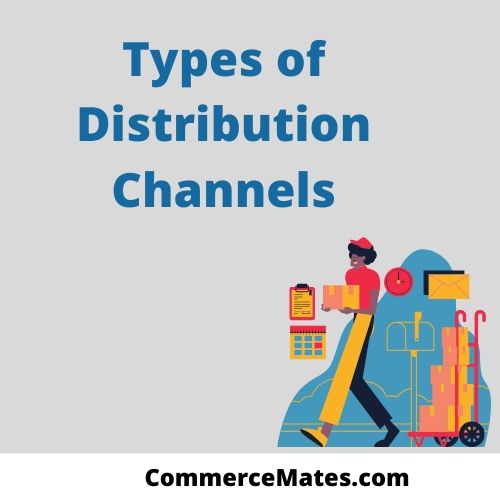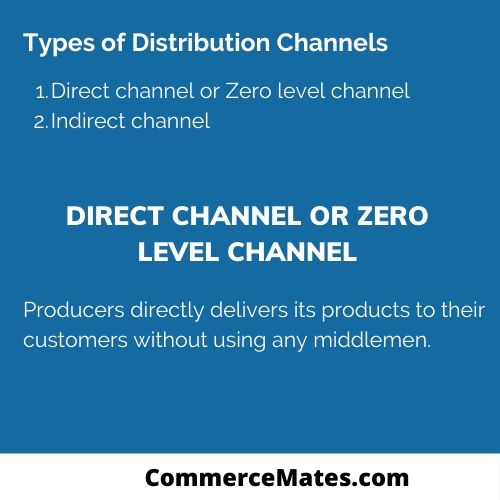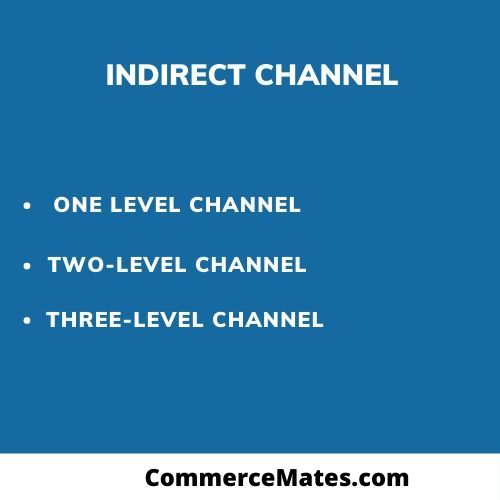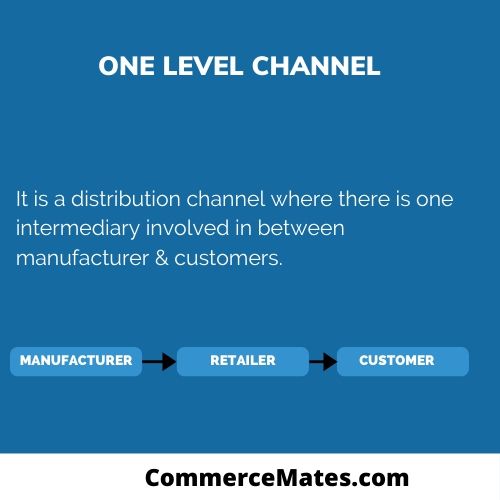Contents
What are Distribution Channels
The distribution channel simply refers to the path or route through which product moves from producer to ultimate customer. It is through distribution channels that businesses are able to deliver their products to customers. The place of production & consumption of products is not the same therefore the distribution channel has an efficient role in overcoming this problem.
Types of Distribution Channels in marketing management
- Direct channel or Zero level channel.
- Indirect channel.
Direct channel
Direct Channel is also termed as Zero-level channel because there are zero intermediaries involved in this channel. Producers directly deliver their products to their customers without using any middlemen. This channel is basically used by businesses to sell perishable or expensive goods. The direct channel is one of the oldest forms of distribution channels used by businesses to sell their products.
The advantage of this channel is that it cuts all profit margins of the intermediaries. Businesses are able to deliver at a lower rate to their customers. It also reduces the time involved in delivering process as product directly flows between manufacturers & customers.
Indirect channel
The indirect channel is those in which manufacturers do not directly sell to customers. There are various middlemen & intermediaries involved in the distribution channel. Intermediaries work for their commission. They purchase products in bulk from manufacturers & supply products to final customers as per their demand.
This type of channel saves manufacturers from the risk of delivering products. They sell all their products to intermediaries & receive payment in cash. There are 3 types of indirect channels
- One level,
- Two-level, &
- Three-level channels.
One level channel
It is a distribution channel where there is one intermediary involved in between manufacturer & customers. This intermediary is termed as a retailer. Manufacturers instead of selling their products directly to customers sell them to retailers. These retailers then sell them to customers as per their requirements. Retailers set their profit margin over the price they pay to manufacturers. This channel is used for consumer goods like clothes, furniture, watches, mobiles, etc.

Two-level channel
Two-level distribution channel is one in which there are 2 intermediaries involved in distribution network of business. These intermediaries are wholesalers & retailers. Producer’s sells goods in large quantities to wholesalers; wholesalers sell them in small quantities to the retailers. Retailers finally deliver the goods to customers in quantities demanded by them. They both charge their commission for supplying the goods from producers to customers. This channel is more convenient in case of durable & inexpensive products.

Three-level channel
Three-level distribution channel is longest form of distribution channel. Here there are 3 intermediaries involved: Agents, Wholesalers & Retailers. Agents are the person who represents the producer & company. In place of manufacturers, the agents deal with intermediaries. These agents do not have ownership of goods but they work on remuneration basis for companies.
In this channel, agents sell goods to wholesalers on behalf of the company. Wholesalers then sell these goods to retailers & retailers sell these to final customers. This channel is used when demand for the product is very high & customers are scattered largely all over the country.

Conclusion of Distribution Channel
Distribution channel overcomes the place barrier in delivering the products. If customers are not able to get their products at the right time & in proper condition from businesses, they will definitely look for other options in the market. Businesses should therefore carefully decide their distribution channel for serving their customers better & winning their loyalty.
They should try to lower the cost involved in delivering goods to ultimate customers. Also, they should choose the one involving fewer intermediaries in between that will lower the profit margin & cost to customers. This will help in reducing the time involved in the delivery of goods.






